Civil service pay
We look at the average salaries across government departments.
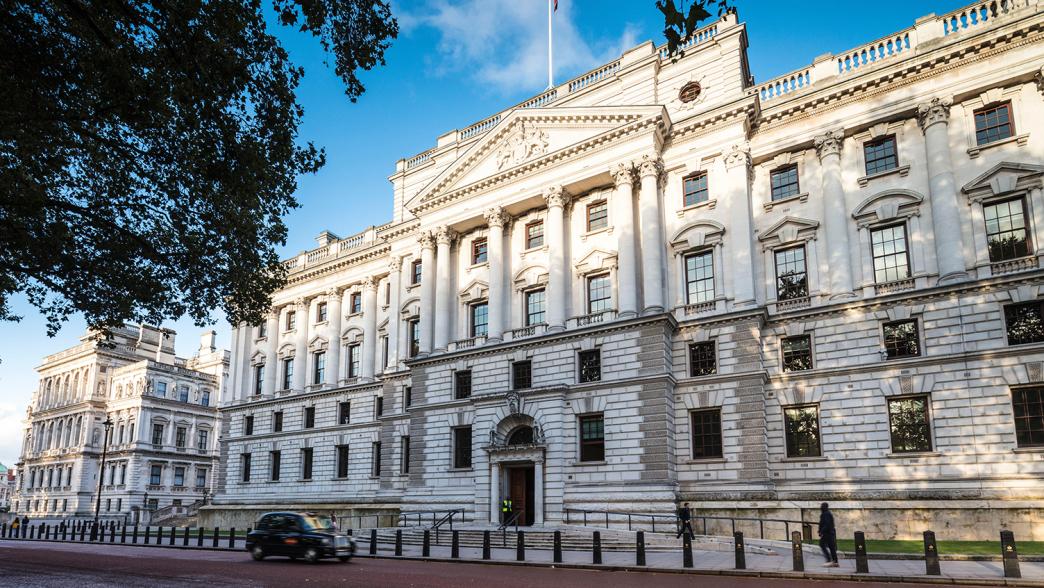
How much are civil servants paid?
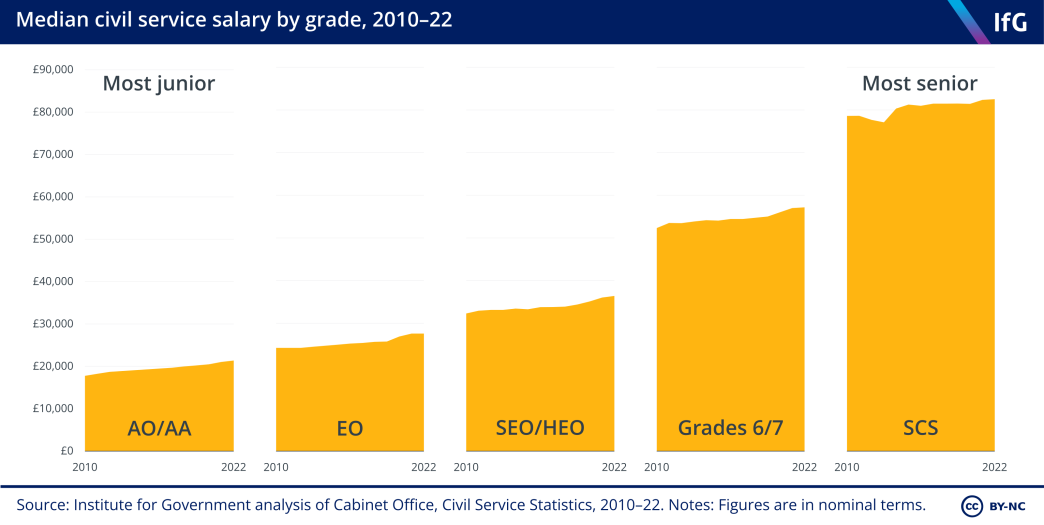
The median salary of civil servants is £30,110. Pay varies by grade: at the most junior level, the median salary is £21,380, while the median senior civil servant earns nearly four times as much (£82,550).
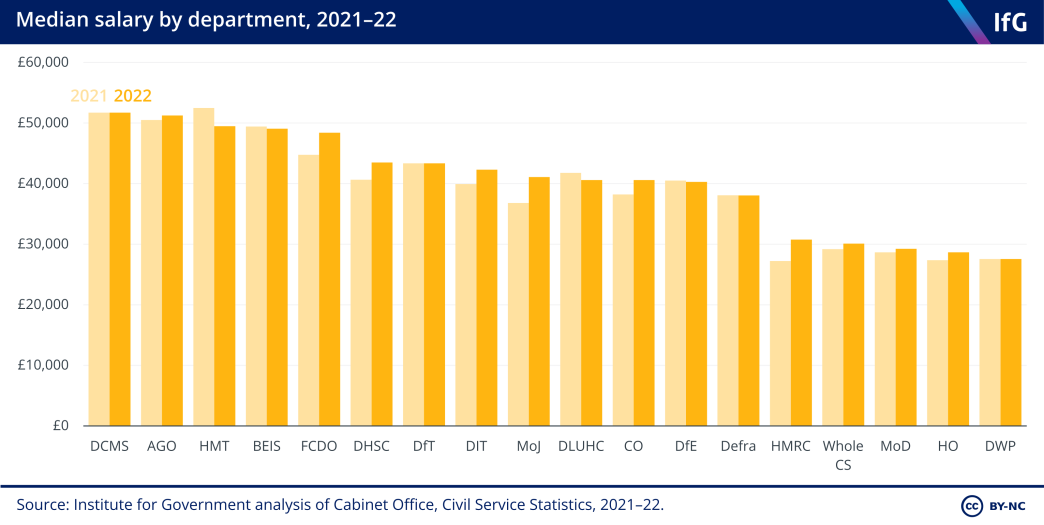
Salaries vary considerably across Whitehall departments, with the highest median salary (DCMS, £51,730) being more than £24,000 larger than the lowest (DWP, £27,570). This largely reflects the grade composition in different departments, with departments that are proportionally more senior having higher median salaries.
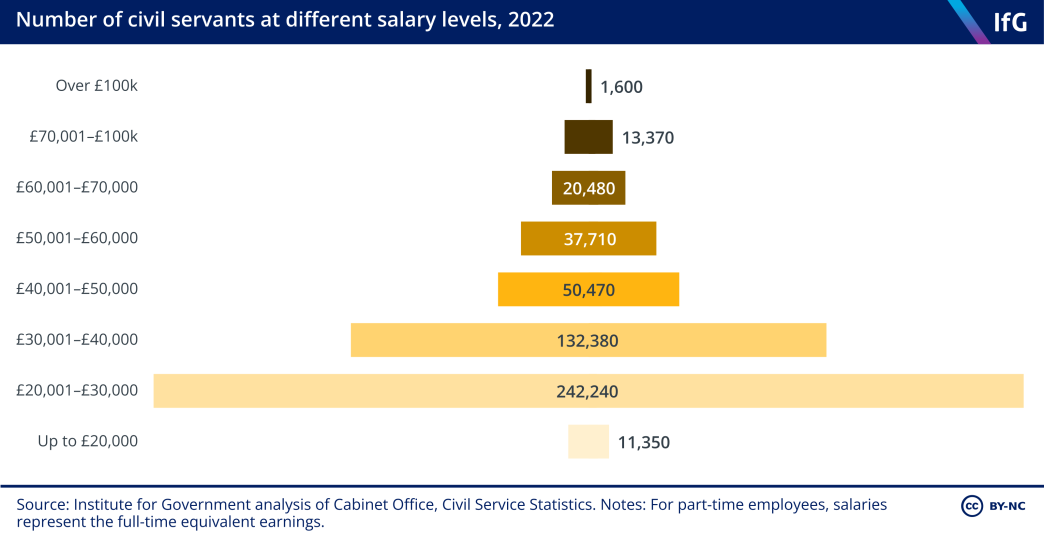
Nearly half (49.7%) of civil servants are paid below £30,000. Higher salaries are less common: just under a quarter (24.2%) of civil servants earn more than £40,000 and less than 3% earn over £70,000.This is partly due to the size of the big delivery departments such as DWP (£27,570) and the Home Office (£28,650), where median pay is lower. These departments have a high proportion of junior staff and are also more likely to employ people outside of London, where salaries are lower, than more policy-focused departments like the Treasury. This shapes the pay profile of the whole civil service.
How has civil service pay changed?
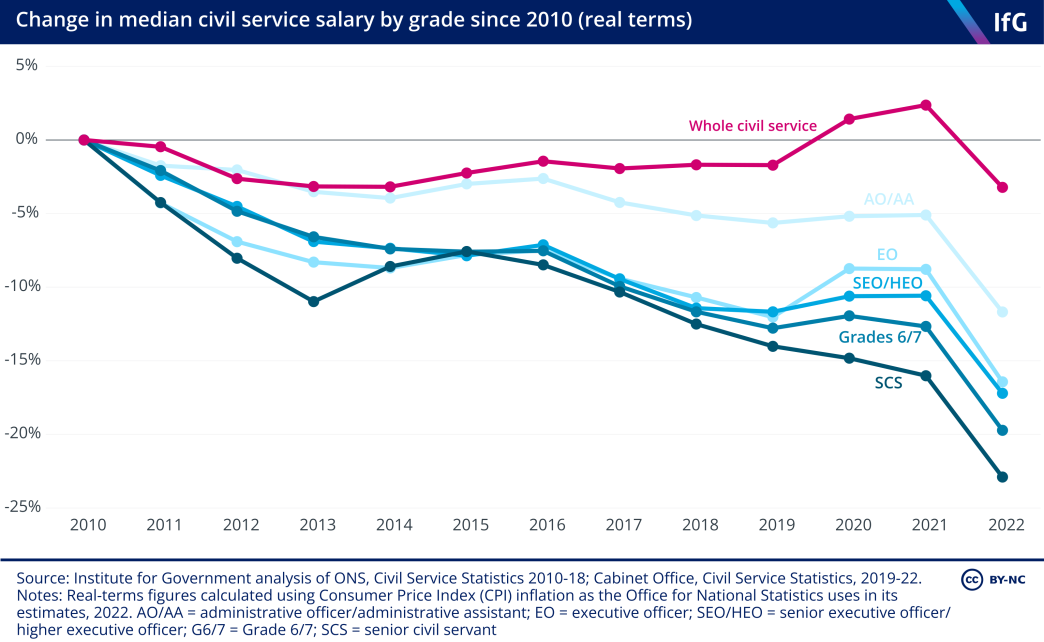
Compared to 2010, civil servants’ median salaries at each grade have reduced in real terms between 12% at the most junior levels and 23% at the most senior. This particularly worsened in 2022 due to high rates of inflation.
A two-year public sector pay freeze between 2011 and 2013 was followed by a 1% average cap between 2013 and 2017. 9 Hoddinott S, Fright M and Pope T, ‘Austerity’ in public services: Lessons from the 2010s, Institute for Government, October 2022, https://www.instituteforgovernment.org.uk/publication/report/austerity-public-services-lessons-2010s By 2020/21, civil servants were eligible for pay rises of between 1.5% and 2.5%, with departments left to determine how much to increase pay within that range.
In the 2020 spending review, the chancellor announced another pay freeze for civil servants (excluding those earning under £24,000) in 2021/22.
In March 2022, junior and senior civil servants were offered a pay increase of 2%, with departments having flexibility to pay up to 3% in certain circumstances. Pay awards in the wider public sector have been agreed at 4–5% in the case of industrial action, while the private sector has agreed awards over 6%.
The median salary of the civil service, overall, has fallen by 3% since 2010 – less than the median real-terms changes at each individual grade. This is being driven by the increased seniority of the civil service. While it is likely that at least some of this is a genuine change in composition, it is also likely that some civil servants are being promoted to boost their salaries, to stop them from leaving the civil service and to manage morale, rather than because their skill-set and responsibilities demand it. These promotions are likely to be focused in the middle grades, where there are more roles people can be promoted into than at senior levels. And it is harder to promote a junior official in an administrative, operational role because of the different responsibilities at the EO level.
How do pay ranges vary between departments?
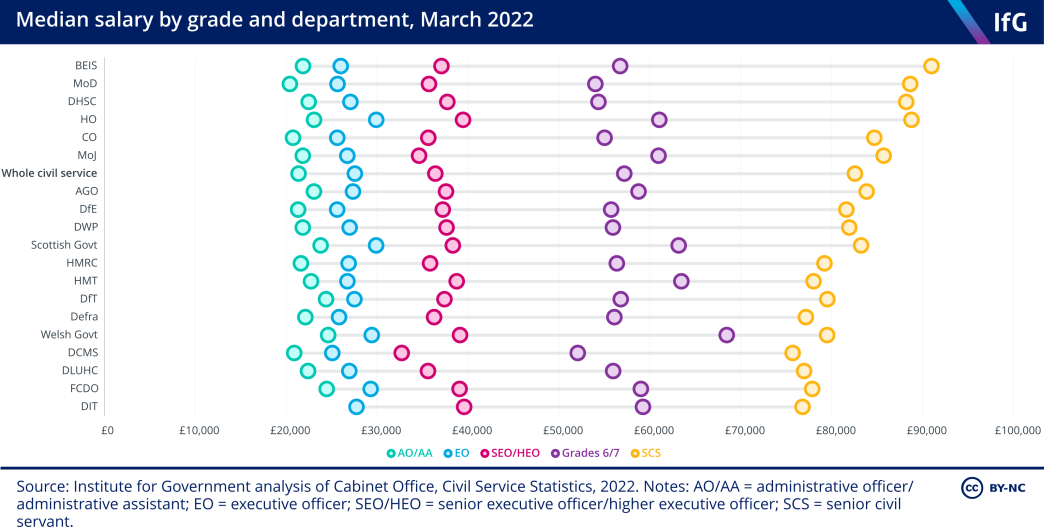
Pay at each civil service grade varies between departments:
- The median civil servant at the AO/AA level at MoD earns £20,423, whereas their equivalents in the Welsh government earn £24,630, nearly as much as the median executive officer at DCMS.
- Median pay for grade 6/7 Whitehall civil servants varies by over £11,000, from £52,070 at DCMS to £63,468 at the Treasury. This range rises to £16,390 when including the Welsh government.
Differences between salaries at the same grade allow departments some flexibility to set pay to attract and retain talent. However, it can also contribute to the churn of staff at grade 6 and below, who are able and incentivised to ‘job hop’ in search of higher salaries.
Who sets civil service pay and how?
Pay for senior civil servants is set in a similar way to much of the public sector. The review body on senior salaries (SSRB) gathers evidence and advises the government each year. Ultimately, the government decides whether to accept or amend the SSRB’s recommendation.
The pay of all other civil servants is set differently – without the input of a pay review body. Civil servants in HM Treasury and the Cabinet Office advise ministers, who then agree annual pay remit guidance. 10 Cabinet Office, Civil Service Pay Remit guidance, 2022 to 2023, 31 March 2022, https://www.gov.uk/government/publications/civil-service-pay-remit-guidance-2022-to-2023 This guidance acts as a framework within which departments are able to set their own pay policy. Departments have the flexibility to pay awards higher than the overall limit, but within an agreed cap, where they can justify the need to do so and secure the approval of the Treasury. For example, the current guidance allows departments to pay up to 2% increases, with flexibility to pay a further 1% in some cases.
Bonuses (known as non-consolidated performance payments) are awarded annually to staff based on their performance at an individual, team or organisational level. Previous IfG research has found that current civil service bonuses have little impact on performance or motivation.
What are the risks of low civil service pay?
Low pay can undermine staff morale. Civil servants expressed significant dissatisfaction in the 2022 People Survey (the data of which is yet to be published by government), which a report in The Times showed only just over a quarter (28%) of officials felt their pay “adequately reflects” their performance, down from 38% in 2021. 12 Wright O, ‘Collapse in civil service morale after No 10 chaos’, The Times, 15 December 2022, www.thetimes.co.uk/article/collapse-in-civil-service-morale-after-no-10-chaos-zwf75szj0
Low pay can contribute to staff turnover – in 2021/22, 8.9% of officials left the civil service. Talented junior officials in particular may opt to leave the service for better paid, equivalent roles in the wider public and private sector. High turnover damages productivity, undermines subject knowledge and expertise and increases the resources required for recruitment and training.
Low pay also makes it harder to recruit external talent into the civil service. IfG research found that comparatively low civil service salaries have been weakened further by pay restraint and led to the SCS employment proposition becoming less attractive, in particular for specialists. The relatively generous civil service pension scheme also plays a role – in some circumstances it compensates for lower pay, but in others it ties up reward packages in pensions that do not help solve short and medium-term recruitment and motivation problems, or in schemes that are of little value to high earners.
Whitehall Monitor 2024
Our annual, data-based assessment of the UK civil service, how it has changed and performed over the past year, and its priorities for the future.
Read our report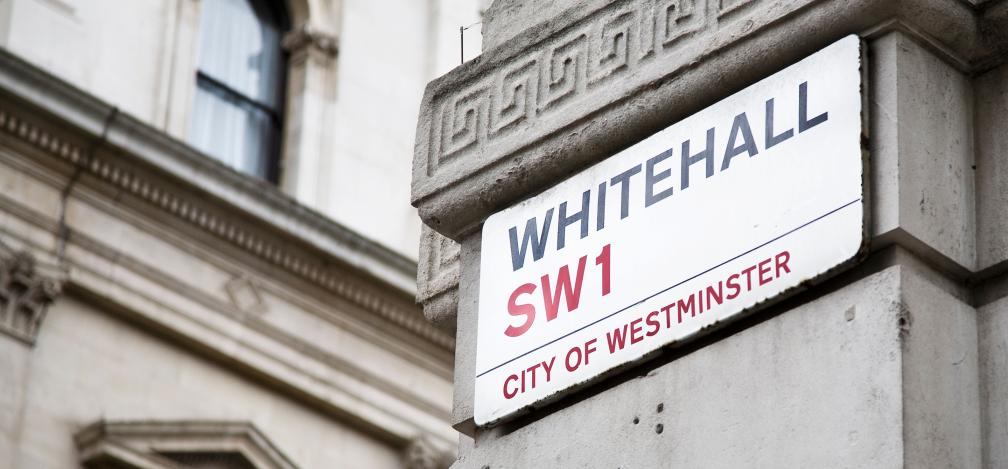
- Topic
- Civil service
- Department
- Cabinet Office HM Treasury
- Publisher
- Institute for Government